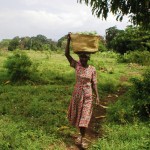The Young Feminist Activism and Communications teams at AWID are thrilled to share with you the launch of the Young Feminist Wire, an online platform for young women working on women's rights and gender equality everywhere around the world. The Wire is a hub of information by, about, and for young feminists: tools and resources, >> Read more
Database: World Bank Frees Up Development Data
The World Bank Group now offers free access to more than 2,000 financial, business, health, economic and human development statistics (including ones on gender) that had mostly been available only to paying subscribers. This effort will allow access to data and information from the World Bank's databases. For more information, visit the website:data.worldbank.org.
Resources: The Drum Beat – Issue 541 – Women’s Political Engagement
How can communication strategies, tools, and activities enhance women's political participation and candidacy toward enhancing gender equity and democracy and governance around the world? This issue of The Drum Beat examines this question by providing a sampling of summaries from our various knowledge sections. From the Communication Initiative Network - where communication and media are >> Read more
Resource: The Socio-economic and Gender Analysis Programme (SEAGA)
The Socio-economic and Gender Analysis (SEAGA) Programme was established in 1993 to promote gender awareness when meeting development challenges. The Food and Agriculture Organization (FAO), the International Labour Organization (ILO) the World Bank and the United Nations Development Programme (UNDP) initially undertook the development of the SEAGA materials. The Programme aims to increase awareness of >> Read more
Resource: Presentations on women and land access from World Bank Annual Land Policy Conference
THEME 3: RESEARCH AND CAPACITY BUILDING CAP1: Improving women’s land access: Options and lessons Chair: M. Verveer, Ambassador at Large for Global Women’s Issues, USA Does inheritance law reform increase women’s access to assets? Evidence from South India A. Goyal, World Bank Policy reform towards gender equality in Ethiopia: Little by little the egg begins >> Read more
Resource: UN Economic Commission for Africa’s African Gender & Development Index
The African Gender and Development Index (AGDI) is a tool that maps the extent of gender inequality in Africa and assesses government performance. It consists of two parts, the quantitative Gender Status Index (GSI) and the qualitative African Women’s Progress Scoreboard (AWPS). The AGDI is a contribution to the Beijing Plus Ten review process. It >> Read more
Resource: PPT from Engendering Agricultural Research
Last Thursday Ruth Meinzen-Dick presented at a IFPRI/World Bank/IFAD seminar on 'Engendering Agricultural Research' The PowerPoint from the event is up here
Resource: GENDER EQUALITY INDICATORS Brief WHAT, WHY AND HOW?
This OECD practice note focuses on the use of gender equality indicators as a way of measuring change. It asks: what are indicators, and why should we develop indicators to measure gender equality? It also addresses the often political issue of what we should be measuring, provides some broad principles that can be applied, and >> Read more
Resources: Powerpoints from Tool Pool on Identifying Gender Dimensions in your Research
Last week 3 IFPRI researchers presented on identifying gender dimensions in your research. To see power points: Agnes Quisumbing's presentation on 'identifying gender dimensions in your research: no cookie cutter approaches' Michelle Adato's presentation on 'using qualitative methods for gender analysis in program evaluations' Andrew Dillon's presentation on 'survey design choices: implications for measuring gender >> Read more
Resource: Guide to Gender-Aware Post-Disaster Needs Assessment
United Nations Development Programme Bureau for Crisis Prevention and Recovery Post-disaster experience reveals that: (i) women and men are affected by natural disasters in similar and different ways; and (ii) recovery activities are often effective when they reflect and address the articulated needs, priorities and interests of both women and men. There is also growing >> Read more

